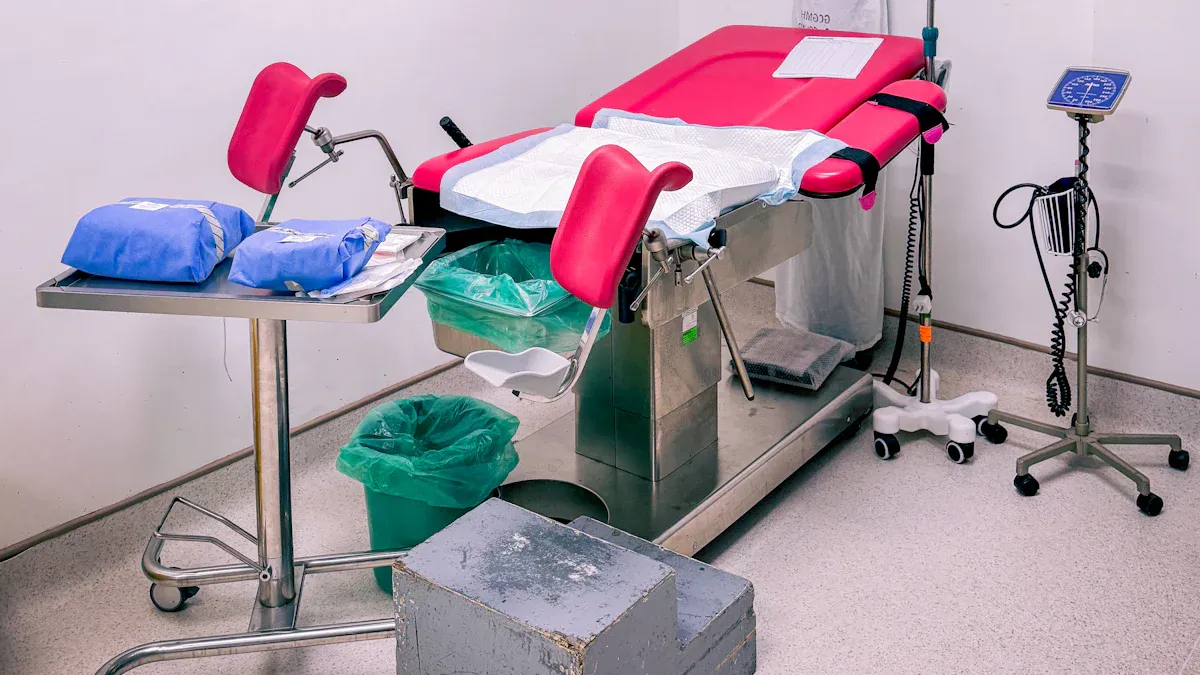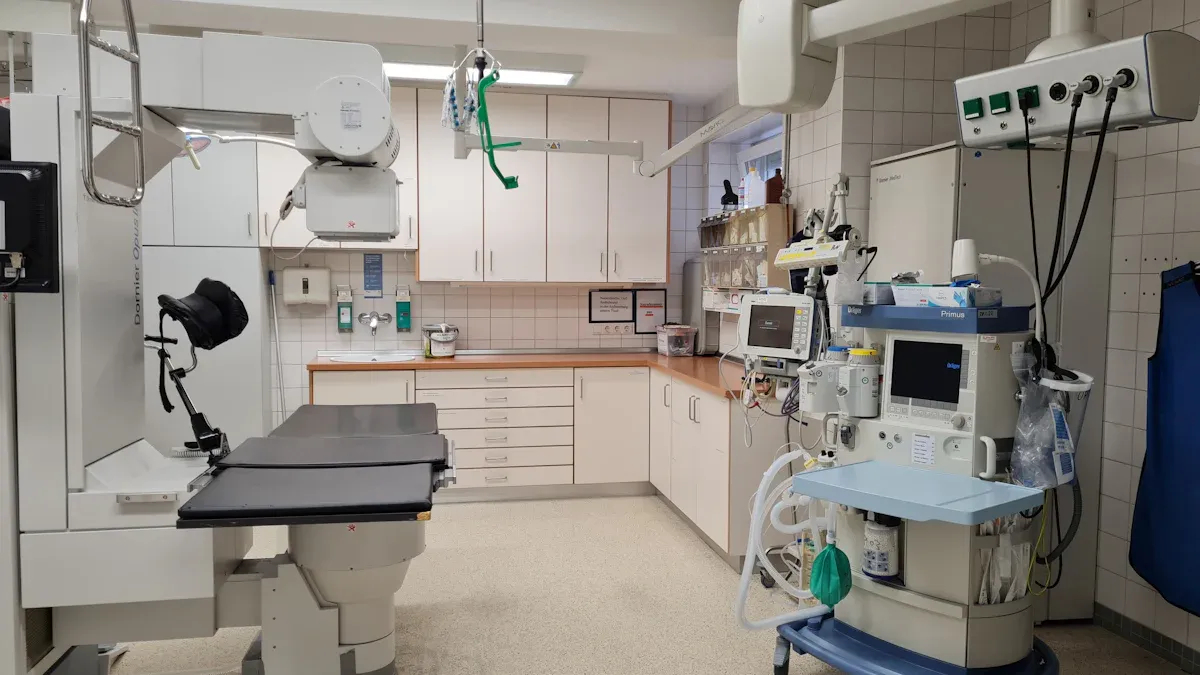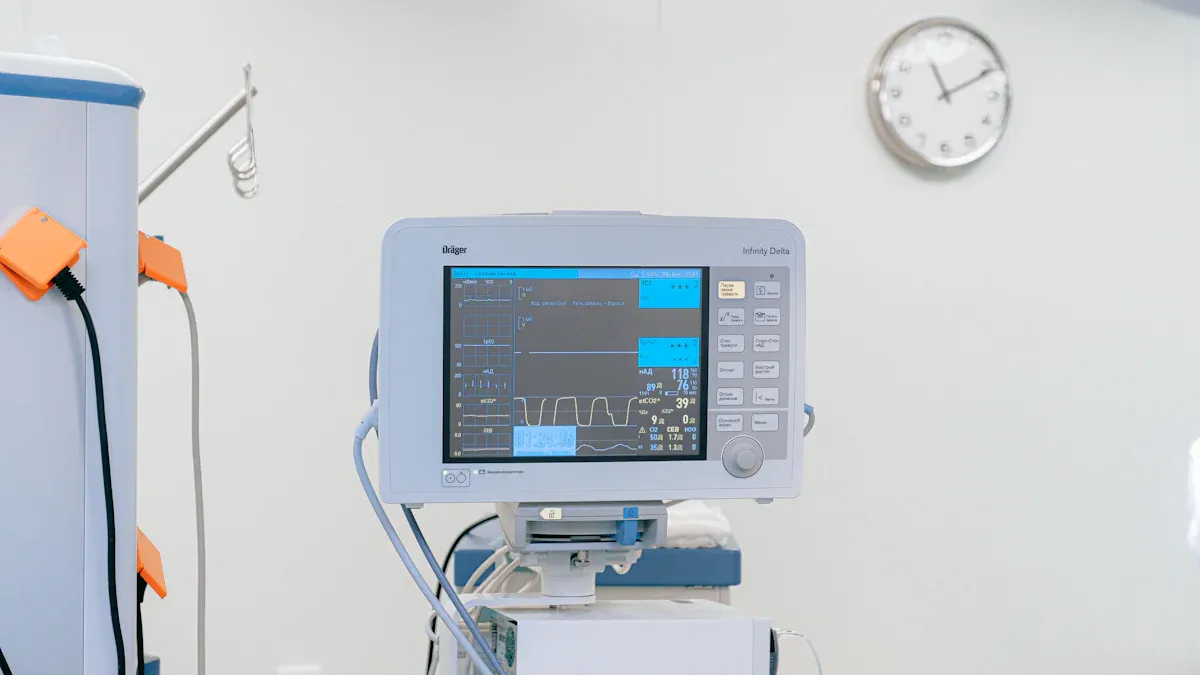
Hospitals in Taiwan rely on medical grade PDUs for safe and reliable power distribution. These devices must meet strict safety standards to protect patients and equipment. Compliance with Taiwan BSMI certification ensures that PDUs adhere to local regulations and deliver the high performance hospitals need to maintain critical operations.
Key Takeaways
- Hospital PDUs are important for safe power use. They follow strict rules to keep patients and devices safe.
- Safety checks help find problems early. Do these checks every 3 or 6 months to stay safe.
- Work with trusted suppliers for good PDUs. This helps follow safety rules and makes approval easier.
Overview of Medical Equipment Rack PDUs

Definition and Purpose of Medical Grade PDUs
Medical grade PDUs are specialized power distribution units designed to meet the unique demands of healthcare environments. These devices ensure safe and efficient power delivery to critical medical equipment. Unlike standard PDUs, they comply with stringent safety and performance standards, making them suitable for sensitive hospital settings.
| Specification | Details |
|---|---|
| Input Voltage | 200/208/240/380/415/440/460/480/500 VAC, 3 Phase, Delta |
| Input Frequency | 50/60 Hz, ± 3 Hz |
| Output Voltages | 480/277 and 400/230 VAC, 3 Phase, Wye |
| Efficiency | 97 – 98% typical |
| Electrostatic Shielding | Two full-length copper foil shields |
These technical specifications highlight their ability to handle high power loads while maintaining efficiency and safety. Hospitals rely on these units to protect both patients and equipment from electrical hazards.
Importance of PDUs in Hospital Power Management
Hospitals depend on uninterrupted power to operate life-saving equipment like ventilators and imaging systems. Medical grade PDUs play a vital role in distributing electricity efficiently across various devices. For instance, a hospital in Saudi Arabia implemented advanced PDUs with remote monitoring to ensure 24/7 uptime for critical procedures. This upgrade minimized risks and enhanced resilience, demonstrating the importance of reliable power management in healthcare.
Advanced PDUs also provide real-time monitoring, allowing hospital staff to detect and address electrical issues before they escalate. This proactive approach ensures that essential equipment remains operational, even during power fluctuations.
Safety Implications of Using Non-Compliant PDUs
Using non-compliant PDUs in hospitals can lead to catastrophic outcomes. For example, power failures at Jinja Referral Hospital resulted in 150 patient deaths over six months. Each day of power outages increased mortality risk by 43%. These incidents underscore the critical need for compliant PDUs to prevent such tragedies.
Non-compliance can also lead to legal disputes, data recovery costs, and operational disruptions. Hospitals must prioritize certified medical grade PDUs to avoid these risks and ensure patient safety.
Key Safety Standards in Taiwan
Taiwan’s Regulatory Framework for Medical Devices
Taiwan hospitals must follow strict regulations to ensure the safety of medical devices, including medical grade PDUs. The Bureau of Standards, Metrology, and Inspection (BSMI) oversees compliance with local standards. These regulations focus on electrical safety, electromagnetic compatibility, and risk management. Hospitals rely on these guidelines to protect patients and staff from electrical hazards.
Medical grade PDUs must meet specific requirements based on their application. For example, devices classified under Means of Operator Protection (MOOP) are designed for environments where patients are not directly exposed to the equipment. On the other hand, Means of Patient Protection (MOPP) applies stricter standards for devices that come into contact with patients.
| Category | Description | Standards |
|---|---|---|
| MOOP | Operator protection for non-patient contact devices | ITE Laboratory Environment Compliance 60950-1, 62368-1 |
| MOPP | Patient protection for direct-contact devices | Stricter insulation and current leakage limits |
| Type B | Power supplies for devices with lighting systems | N/A |
| Type CF | Power supplies for devices contacting a patient’s heart | N/A |
These classifications ensure that medical grade PDUs are tailored to their specific use cases, enhancing safety and reliability in hospital environments.
UL 60601-1 and Its Relevance to Medical Grade PDUs
UL 60601-1 certification plays a vital role in ensuring the safety and reliability of medical grade PDUs. This standard requires compliance with performance, safety, and risk management protocols. Hospitals benefit from devices that meet these rigorous requirements, as they reduce the risk of electrical failures and improve patient outcomes.
Key aspects of UL 60601-1 include:
- Compliance with ISO 14971 risk management practices throughout the product lifecycle.
- Testing for electromagnetic compatibility (EMC) to ensure reliable operation in hospital environments.
- Adherence to essential performance standards, ensuring devices function correctly under specified conditions.
| Requirement Type | Description |
|---|---|
| Essential Performance | Ensures medical devices work properly under defined conditions. |
| Basic Safety | Protects patients and users from electrical hazards. |
| Risk Management | Identifies and mitigates risks throughout the product lifecycle. |
| Electromagnetic Compatibility | Ensures safe operation in environments with electromagnetic disturbances. |
By meeting UL 60601-1 standards, medical grade PDUs provide hospitals with peace of mind, knowing their power distribution systems are safe and dependable.
Certification and Labeling Requirements for PDUs
Certification and labeling are critical for medical grade PDUs used in Taiwan hospitals. Devices must display the BSMI certification mark, indicating compliance with local safety standards. Additionally, international certifications like UL 60601-1 further validate their reliability.
Labels must include essential information, such as voltage ratings, current capacity, and safety warnings. These details help hospital staff identify compliant devices and ensure proper usage. Partnering with certified suppliers simplifies the process, as they provide PDUs that meet all regulatory requirements.
Hospitals should prioritize certified medical grade PDUs to avoid risks associated with non-compliance. Proper labeling and certification ensure that these devices deliver safe and efficient power distribution, supporting critical healthcare operations.
Essential Features of Compliant Medical Grade PDUs

Surge Protection and Electrical Isolation
Surge protection is a critical feature in any medical grade PDU. It shields sensitive medical devices from voltage spikes that could cause malfunctions or permanent damage. Hospitals rely on this feature to maintain the integrity of life-saving equipment, especially during power fluctuations. Electrical isolation further enhances safety by preventing electrical interference between devices. This is particularly important in environments where multiple machines operate simultaneously, ensuring uninterrupted functionality.
| Feature | Description |
|---|---|
| Protection from Power Surges | Safeguards against voltage spikes that can damage sensitive equipment. |
| Electrical Isolation | Prevents interference between devices, ensuring smooth operation. |
These features not only protect equipment but also contribute to patient safety by reducing the risk of unexpected failures.
Reliability and Redundancy in Power Distribution
Reliability and redundancy are essential for uninterrupted power distribution in hospitals. Circuit breakers and surge protection ensure continuous operation by preventing overloads and shielding devices from voltage spikes. Integrated power conditioning reduces electrical interference, which is vital for the proper functioning of sensitive medical equipment.
| Safety Feature | Function | Impact on Reliability and Redundancy |
|---|---|---|
| Circuit Breakers | Protect against overloads and short circuits. | Ensures continuous operation by preventing equipment damage. |
| Surge Protection | Shields devices from voltage spikes. | Maintains functionality of critical medical devices. |
| Integrated Power Conditioning | Reduces electrical interference. | Essential for the proper functioning of sensitive equipment. |
These measures ensure that hospitals can depend on their power systems, even during unexpected outages or electrical disturbances.
Compatibility with Sensitive Medical Equipment
Medical grade PDUs are designed to work seamlessly with sensitive medical devices. They include advanced safety features like circuit breakers and surge protection to ensure a reliable power supply. Integrated power conditioning minimizes electrical interference, which is crucial for devices like imaging systems and ventilators. These units also comply with strict regulatory standards, enhancing their safety and reliability in healthcare settings.
- Custom PDUs ensure a reliable power supply with advanced safety features.
- Integrated power conditioning minimizes electrical interference.
- Compliance with regulatory requirements enhances safety and reliability.
By prioritizing compatibility, hospitals can avoid disruptions and maintain high standards of patient care.
Advanced Monitoring and Control Features
Modern medical grade PDUs come equipped with advanced monitoring and control technologies. These features allow hospitals to manage power setups efficiently and respond to issues quickly. Real-time monitoring provides visibility into power consumption, helping staff optimize distribution and identify inefficiencies. Remote management capabilities enable adjustments from any location, improving response times. Additionally, advanced alarm functions and integration with data center infrastructure management (DCIM) systems enhance oversight.
- Real-time monitoring of power consumption.
- Remote management capabilities for quick adjustments.
- Advanced alarm functions for proactive issue resolution.
- Integration with DCIM systems for comprehensive oversight.
- Environmental monitoring features to track conditions like temperature and humidity.
These technologies ensure that hospitals can maintain a safe and efficient power distribution system, even in complex environments.
Best Practices for Hospitals in Taiwan
Regular Safety Audits and Inspections
Hospitals in Taiwan should conduct regular safety audits to ensure their power distribution systems remain compliant and functional. These audits help identify potential risks, such as faulty wiring or outdated equipment, before they escalate into serious problems. Inspections should focus on verifying that all medical grade PDUs meet local and international safety standards. By scheduling these checks quarterly or semi-annually, hospitals can maintain a safe environment for patients and staff.
Tip: Keep a detailed log of inspection results to track recurring issues and improve future maintenance efforts.
Partnering with Certified PDU Suppliers
Choosing the right supplier is crucial for ensuring the quality and reliability of medical grade PDUs. Hospitals should partner with certified suppliers who have a proven track record of delivering compliant and high-performance products. Suppliers like Newsunn, with years of experience and a dedicated R&D team, can provide customized solutions tailored to hospital needs. Working with trusted suppliers also simplifies the certification process, as their products already meet regulatory requirements.
Staff Training on PDU Usage and Maintenance
Proper training equips hospital staff with the knowledge to operate and maintain PDUs effectively. Training sessions should cover essential topics like safe handling, troubleshooting, and recognizing warning signs of equipment failure. Hospitals can also provide refresher courses to keep staff updated on the latest technologies and safety protocols. Well-trained personnel reduce the risk of errors and ensure the longevity of power distribution systems.
Establishing a Preventive Maintenance Schedule
A preventive maintenance schedule is essential for keeping PDUs in top condition. Hospitals should inspect batteries, check cooling systems, and secure electrical connections regularly. Maintenance plans can be divided into monthly, quarterly, semi-annual, and annual tasks to ensure thorough coverage. For example:
| Strategy | Description |
|---|---|
| Battery Maintenance | Proactive management of battery availability to reduce downtime risks. |
| AC Power Services | Scheduled maintenance and component replacements to enhance system reliability during power incidents. |
| Monitoring Services | Continuous remote monitoring to identify and resolve issues before they escalate. |
| Thermal Management | Specialized services to optimize cooling equipment performance and efficiency. |
Preventive maintenance not only ensures reliability but also extends the lifespan of medical grade PDUs. Hospitals can save costs and minimize risks by addressing issues before they lead to equipment failure.
Compliance with safety standards for medical grade PDU systems ensures reliable power distribution in Taiwan hospitals. Certified PDUs, adherence to regulations, and proper maintenance practices create a safer environment. Hospitals that prioritize these measures improve patient care and operational efficiency, fostering trust and reliability in their healthcare services.
FAQ
What is the difference between a standard PDU and a medical grade PDU?
Medical grade PDUs meet stricter safety standards, like UL 60601-1, and include features like electrical isolation and surge protection. These ensure compatibility with sensitive medical equipment.
How often should hospitals inspect their medical grade PDUs?
Hospitals should conduct safety audits and inspections quarterly or semi-annually. Regular checks help identify risks early and ensure compliance with safety standards.
Can medical grade PDUs be customized for specific hospital needs?
Yes, certified suppliers like Newsunn offer customizable PDUs. Hospitals can request tailored designs to meet unique power distribution requirements and ensure compatibility with their equipment.
Tip: Always consult certified suppliers for customization to ensure compliance with safety regulations.
Post time: Apr-14-2025

